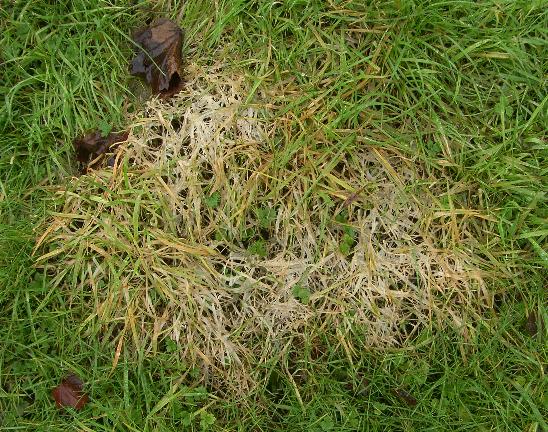
A patch of Snow Mould affected grass after a period of snow cover.
A fungal disease which attacks lawns.
Infection usually occurs at temperatures between 0°C and 8°C,
conditions which are present under snow giving it the
common name of Snow Mould.
If conditions are present it can appear later as
irregular patches of yellow then brown grass up to 30cm
in diameter when there is high humidity and
temperatures of up to 18°C. This usually occurs
between May and September, when damp conditions
prevail. The dead blades of grass become slimy and are
covered in a light-pink bloom. It is transmitted by
wind-borne asexual spores and the dormant phase is as
mycelium in dead leaf matter
where it rests during frosty or dry summer conditions.
Infected material can be carried on tyres or shoes to spread the disease.
To prevent infection:
Only one fungicide is available for use by the amateur gardener, trifloxystribin sold as Bayer Garden Lawn Disease Control in the UK, but to avoid resistance developing it should not be used more than twice in one year. A systemic fungicide such as Carbendazim which kills the mycelium would also work, but due to EU regulations it is only available for professional greenkeepers to use in UK as a treatment for lawns.
Similar dead patches can be caused by dog urine, but if you don't have a pet Red Thread could be the cause. Slime Moulds are completely different organisms, although the blades of grass become slimy.
Back to article on Plant Diseases